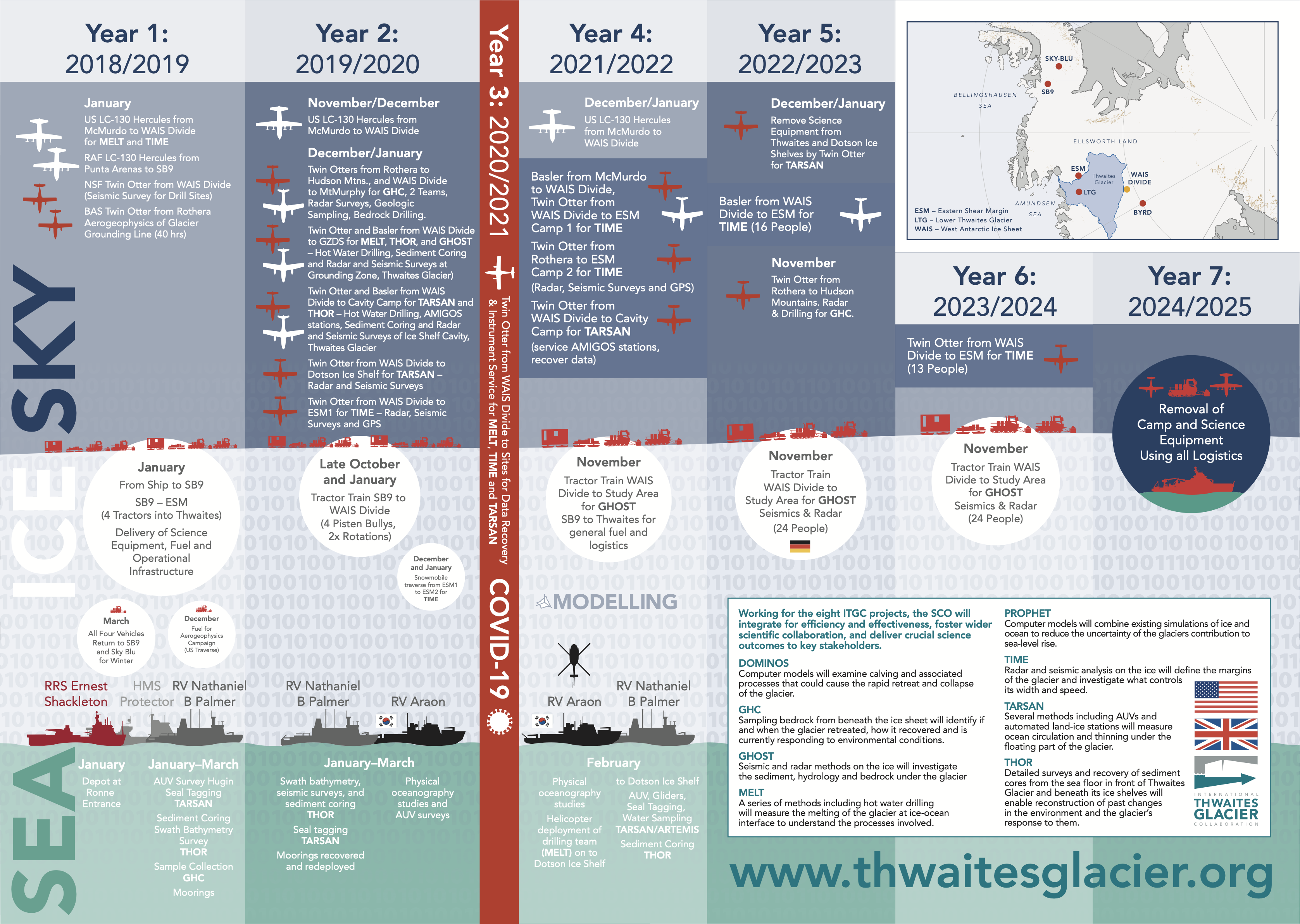Ockenden 16, 3867-3887
Ockenden, H., R. G. Bingham, A. Curtis, and D. Goldberg. 2022. Inverting ice surface elevation and velocity for bed topography and slipperiness beneath Thwaites Glacier. The Cryosphere 16, 3867–3887.
Book 597 1 Nov 2022:117798
Book, C., M. J. Hoffman, S. B. Kachuck, T. R. Hillebrand, S. F. Price, M. Perego, and J. N. Bassis. 2022. Stabilizing effect of bedrock uplift on retreat of Thwaites Glacier, Antarctica, at centennial timescales. Earth and Planetary Science Letters. Volume 597, 1 November 2022, 117798.
New high resolution images of the seafloor in West Antarctica show past retreat of Thwaites Glacier. They reveal that at times in its past, retreat of the massive Thwaites Glacier was even quicker than it is today, heightening concerns for its future. The results were published Monday 5 September in the journal Nature Geoscience.
Extended research plan infographic for ITGC
With the covid pandemic, the International Thwaites Glacier Collaboration program has extended through 2026. Below is the plan for the duration of the research. Download the image using the link below.

Zoet 2021 46:13 2540-2550
Zoet, L. K., J. E. Rawling III, J. B. Woodard, N. Barrette, and D. M. Mickelson. 2021. Factors that contribute to the elongation of drumlins beneath the Green Bay Lobe, Laurentide Ice Sheet. Earth Surface Processes and Landforms 46:13 2540-2550.
Alley 2021 126, e2021JF006339
Alley, R. B., N. Holschuh, D. R. MacAyeal, B. R. Parizek, L. Zoet, K. Riverman, et al. 2021. Bedforms of Thwaites Glacier, West Antarctica: Character and origin. Journal of Geophysical Research: Earth Surface, 126, e2021JF006339.
Larter 2022 49:4 e2021GL097421
Larter, R. D. 2022. Basal Melting, Roughness and Structural Integrity of Ice Shelves. Geophysical Research Letters, 49:4 e2021GL097421.
Kachuck 2022 1-12
Kachuck, S., M. Whitcomb, J. Bassis, D. Martin, and S. Price. 2022. Simulating ice-shelf extent using damage mechanics. Journal of Glaciology, 1-12.







